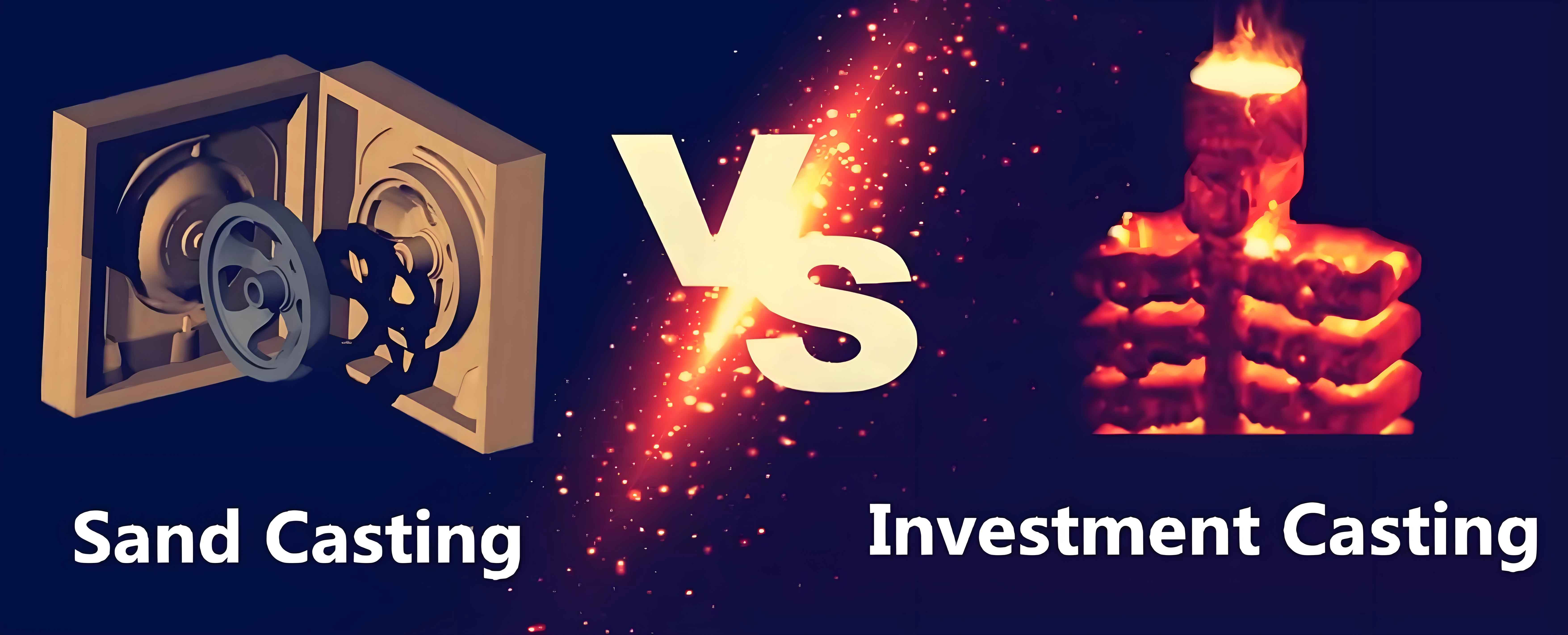
Casting is a crucial manufacturing process used to produce a wide range of metal components. Among the various casting techniques, Sand Casting and Investment Casting are two widely used methods, each with its unique advantages and limitations. This article will provide a comprehensive comparative analysis of Sand Casting and Investment Casting, focusing on their suitability for producing complex components.
Overview of Sand Casting
Sand Casting is a versatile and widely adopted casting method that uses sand as the mold material. The process involves creating a mold cavity by compacting sand around a pattern, which is a replica of the final product. The molten metal is then poured into the mold cavity, allowed to cool and solidify, and finally, the sand mold is broken apart to retrieve the casting.
Key Steps in the Sand Casting Process
- Pattern Making: Creating a pattern that mimics the final component.
- Mold Making: Forming the mold cavity using sand and binders.
- Core Making: Producing cores for internal cavities if needed.
- Melting and Pouring: Melting the metal and pouring it into the mold.
- Cooling and Solidification: Allowing the metal to cool and solidify.
- Shakeout: Breaking the sand mold to retrieve the casting.
- Cleaning and Finishing: Removing excess material and cleaning the casting.
- Inspection: Checking for defects and ensuring quality.
Overview of Investment Casting
Investment Casting, also known as lost-wax casting, is a precision casting method used to produce intricate and high-accuracy components. The process involves creating a wax pattern, which is then coated with ceramic material to form a mold. After the ceramic mold is hardened, the wax is melted and drained away, leaving a cavity for the molten metal to be poured into.
Key Steps in the Investment Casting Process
- Wax Pattern Creation: Producing a wax replica of the final component.
- Assembling Wax Patterns: Combining multiple patterns to form a tree-like structure.
- Shell Building: Coating the wax patterns with ceramic material to form a mold.
- Wax Removal: Melting and removing the wax to create a mold cavity.
- Preheating the Mold: Heating the ceramic mold to remove any residual wax and strengthen it.
- Melting and Pouring: Melting the metal and pouring it into the ceramic mold.
- Cooling and Solidification: Allowing the metal to cool and solidify.
- Shell Removal: Breaking the ceramic mold to retrieve the casting.
- Cutting and Finishing: Removing excess material and finishing the casting.
- Inspection: Ensuring the casting meets quality standards.
Comparative Analysis of Sand Casting and Investment Casting
Complexity and Precision
| Criteria | Sand Casting | Investment Casting |
|---|---|---|
| Pattern Complexity | Limited by the ability to compact sand around the pattern | Can produce highly intricate and detailed patterns |
| Dimensional Accuracy | Moderate | High |
| Surface Finish | Rough, requiring additional finishing | Smooth, with minimal finishing required |
Material and Size Range
| Criteria | Sand Casting | Investment Casting |
|---|---|---|
| Material Versatility | Suitable for a wide range of metals and alloys | Typically used for non-ferrous and certain high-performance alloys |
| Component Size | Can produce very large components | More suitable for small to medium-sized components |
Production Efficiency
| Criteria | Sand Casting | Investment Casting |
|---|---|---|
| Setup Time | Relatively short | Longer due to the need for wax patterns and ceramic molds |
| Production Speed | Faster for large volumes | Slower, but suitable for high-precision requirements |
| Cost | Generally lower, especially for large parts | Higher due to precision and complexity |
Applications
| Application Type | Sand Casting | Investment Casting |
|---|---|---|
| Automotive Parts | Engine blocks, cylinder heads, and manifolds | Turbocharger components, fuel injectors |
| Aerospace Components | Landing gear components, housings | Turbine blades, structural components |
| Industrial Machinery | Pump housings, valve bodies | Precision gears, impellers |
| Artistic and Decorative | Sculptures, plaques | Jewelry, intricate ornaments |
Advantages and Disadvantages
Sand Casting
Advantages
- Cost-Effective: Particularly for large components and low to medium production volumes.
- Material Flexibility: Suitable for a wide range of metals and alloys.
- Versatility: Capable of producing large and heavy components.
- Short Setup Time: Quicker to prepare molds for production.
Disadvantages
- Dimensional Accuracy: Lower compared to Investment Casting, often requiring additional machining.
- Surface Finish: Rough surface finish necessitates further finishing operations.
- Complexity Limitations: Less suitable for producing highly intricate and detailed components.
Investment Casting
Advantages
- High Precision: Excellent dimensional accuracy and surface finish.
- Intricate Designs: Capable of producing complex geometries and detailed patterns.
- Material Efficiency: Minimal waste due to precise molding and reduced need for additional machining.
- Consistency: High-quality consistency for small to medium-sized components.
Disadvantages
- Higher Cost: More expensive due to the complex process and materials used.
- Longer Setup Time: Requires more time to prepare wax patterns and ceramic molds.
- Size Limitations: Less suitable for very large components.
Conclusion
The choice between Sand Casting and Investment Casting depends on various factors, including the complexity of the component, the required precision, the production volume, and the cost considerations. Sand Casting is ideal for producing large, heavy components with moderate precision and surface finish requirements. It is cost-effective and versatile, making it suitable for a wide range of applications. On the other hand, Investment Casting is the preferred method for producing small to medium-sized components with high dimensional accuracy and intricate designs. Although it is more expensive and has a longer setup time, Investment Casting offers superior quality and consistency.
By understanding the strengths and limitations of each casting method, manufacturers can make informed decisions to optimize their production processes and achieve the desired balance between cost, quality, and efficiency.
